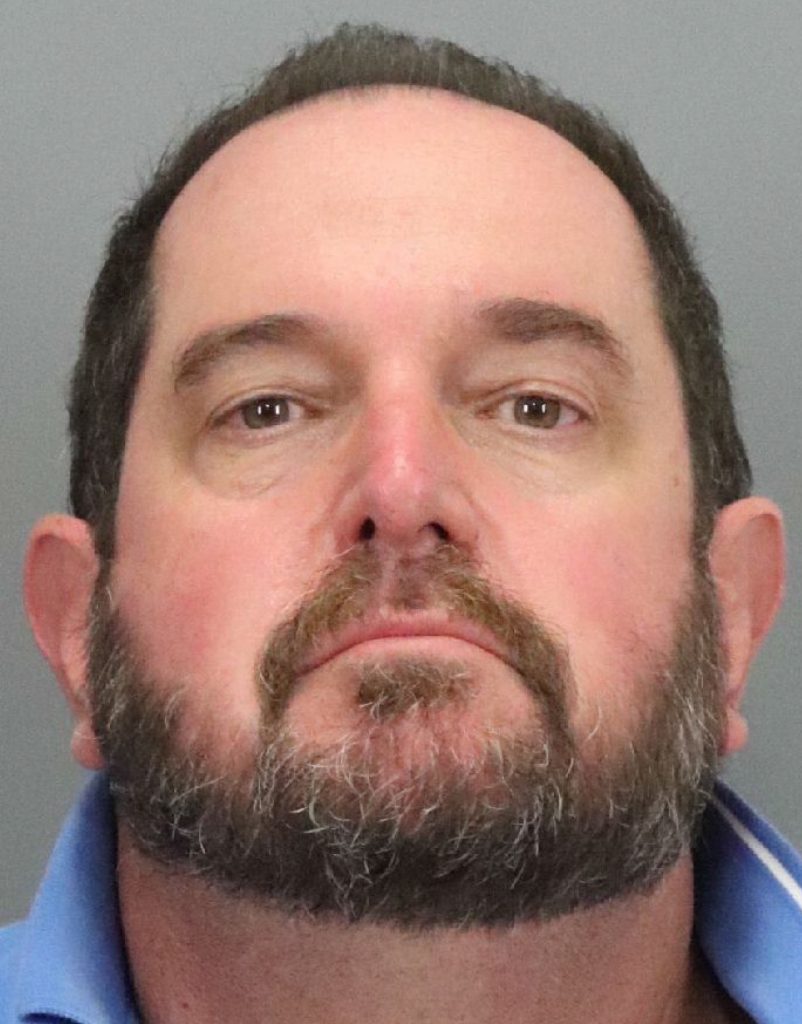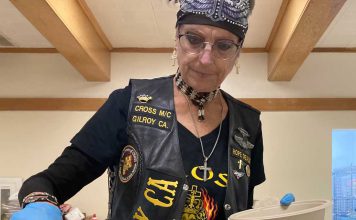By Todd Guild
When armed Air Force Sgt. Steven Carrillo gunned down Santa Cruz County Sheriff’s Sgt. Damon Gutzwiller and injured three other law enforcement officials in a short but violent June crime spree, it thrust the Boogaloo group in which he claimed membership into the national spotlight. Carrillo, who used a homemade weapon, faces additional charges for gunning down a federal officer in Oakland.
In the weeks that followed, Police also arrested Carrillo’s alleged accomplice in the Oakland shooting, another man with ties to Boogaloo.
Then on Aug. 27, Gilroy resident Alan Viarengo was arrested for allegedly sending 24 anonymous, threatening letters to Santa Clara County Health Officer Sara Cody. Investigators serving a search warrant at his home found 138 firearms, thousands of rounds of ammunition and explosive materials.
The Santa Cruz County Sheriff’s Office also received threatening letters, as did Gutzwiller’s family, and Santa Cruz sheriff’s deputies are investigating whether those letters have any connection to Viarengo, who worked as a teacher at Gavilan College in Gilroy, and had his own ties to Boogaloo.

Despite the high-profile Boogaloo Boi cases, there’s no evidence that the movement has a particular foothold in the region, although law enforcement and civil rights experts are still learning about the underground group.
Origins of the Boogaloo name trace back to 1960s New York City, where a man named Joe Cuba invented a Latin-American dance by the same name. Then came a 1984 movie titled Breakin’ 2: Electric Boogaloo, a B-movie about evil developers trying to demolish an urban recreation center, and the plucky dancers who try to stop them.
The “Boogaloo” term took on new meaning when a loose-knit group of anti-government activists adopted it.
Anti-government activists began sharing memes playing on the film’s title, with variations like “Civil War 2: Electric Boogaloo,” according to the Anti-Defamation League (ADL). Per the ADL, Boogaloo members built the movement around preparing for the civil war they believe will lead to the collapse of the U.S. government and society.
On the Fringe
The Boogaloo group is not mainstream nor even particularly well understood, says ADL Regional Director Seth Bryst.
“It still is very much a fringe group,” he says, “not something where we have any particular imminent threats, none that we’re aware of or that are being reported about.”
The FBI declined to comment directly for this story, but instead emailed a prepared response that the term “Boogaloo” does not refer to a single, cohesive group.
“It is a loose concept discussed on internet platforms, which has become a rallying point for a variety of actors motivated by several different ideologies,” the statement reads. The bureau says its concern is not about ideology, but potential violence.
The pandemic may be fueling more interest in the group. Bryst explains that members associated with Boogaloo have increasingly made appearances at public demonstrations, many of them expressing frustration with restrictions in response to the pandemic.
Some, Bryst says, are hoping to stoke racial tension as a catalyst for what they believe is a coming civil war. Others, he adds, claim not to be racist but are merely protesting what they frame as government overreach.
The Boogaloo movement also sometimes uses similar-sounding words such as “big igloo”—hence the igloo images sometimes connected to it—and “big luau,” which is why many members wear Hawaiian print shirts. (One symbol for the group is a modified black-and-white American flag with a Hawaiian-print stripe and an igloo on it.)
In addition, some members have used hashtag terms such as “#CNN” and terms like “CNN Bois,” Bryst says. These terms are both a way to identify themselves to other members and to hide their activities from those who aren’t in the know, he says.
Because it isn’t a membership organization and it has no leadership structure, it’s difficult to determine the prevalence of the movement, Bryst says.
Bryst says law enforcement should pay attention to the activities of the Boogaloo movement, even when they are engaged in constitutionally protected activities.
“It’s not a bad idea to make law enforcement aware, because sometimes it can be a harbinger and sometimes it can help to establish a pattern, or be helpful in terms of a future investigation,” Bryst said.
Spokespeople from the Santa Cruz and Watsonville police departments and the Santa Cruz County Sheriff’s Office, all had similar statements: yes, we’re aware of the group but no, we’re not concerned that there’s any imminent threat from the Boogaloo movement.
“We do pay attention to various hate groups in the city and in the county,” SCPD spokeswoman Joyce Blaschke said.
Boogaloo Speaks
Boogaloo members claim that their community is peaceful, and not a hate group.
Duncan Lent, who goes by “Boogalooboi” on social media, lives in the Appalachian region. He estimates that between 500,000-1,000,000 people around the U.S. identify with the movement, with members communicating largely through social media. But with platforms clamping down on language associated with Boogaloo, many are turning to local, in-person networking, he says.
Lent says he doesn’t believe Carrillo speaks for the movement, adding that the group pretty much “excommunicated” Carrillo after he was arrested for murder. (Carrillo allegedly wrote “boog” in his own blood after his crime spree—an apparent reference to the movement. He also had at least one Boogaloo patch and met his accomplice Robert Justus through the movement.)
Guns are central to the Boogaloo group’s ideology, though.
Lent says he began to identify with the term “Boogaloo” years ago while working in a gun shop, and saw lawmakers pass laws that he viewed as onerous. This includes legislation governing barrel length, and a law banning bump-stocks, which came in the wake of the October 2017 shooting in Las Vegas that killed 59 and wounded 412. Bump stocks replace the stock on a rifle, which allows the recoil to “bump” the rifle back and forth against the trigger finger, making rapid fire easier.
“The point of the Boogaloo movement is for us and generations moving forward to maintain the freedoms that this country was founded with,” Lent says.
In June, Facebook removed 220 Facebook accounts, 106 Facebook groups, 95 Instagram accounts and 28 Facebook pages associated with the Boogaloo movement, for fear they were planning violent attacks.
Bryst, of the ADL, says some companies have been more proactive than others when it comes to enforcing violations.
“What we do find is that extremist groups like this have found it easier to spread their messaging in the age of social media,” Bryst says, “and there are some social media platforms that have done a better job of eliminating those that violate their terms.”














